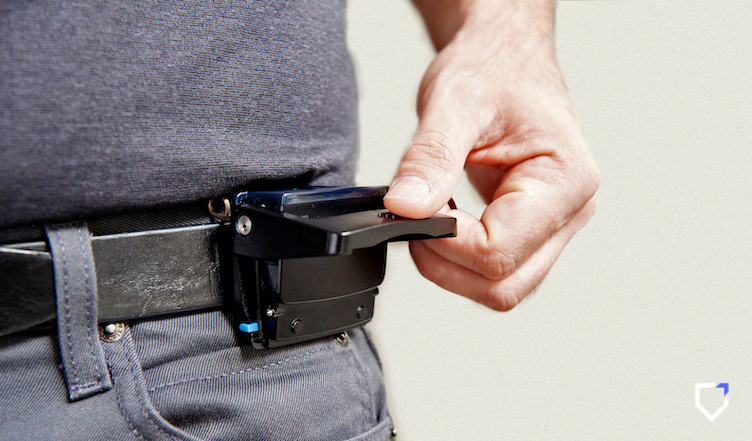When wearable tech is included in a workers’ compensation policy, it can help insureds create a safer workplace with fewer injuries incurred on the job. This makes for a safer, healthier, and more productive workforce, as well as offers an opportunity for policyholders to save on their workers’ comp premiums.
To get the most from wearable tech, companies need to ensure the right workers are wearing the devices for the right amount of time. Insurers can use injury data and prior claims to help determine which employees will benefit most from wearing a safety wearable. Typically, it’s those determined to be at the highest risk, based on the highest risk job functions.
For optimum results, workers must wear the devices regularly. In the companies where we’ve seen the most impact, employees wear the devices for an average of 20 hours per week. To help companies reach this goal – which allows them to reduce injuries and save on premiums – we’ve compiled our top tips for increasing wearable tech participation in the workplace.
Share these 5 tips with clients that are leveraging a tech-enabled workers’ comp program to help them encourage worker adoption:
1. Explain the program’s intent for better worker buy-in
An open dialogue and well-communicated intentions build a strong foundation for success. Early on, let your team know how the devices will and will not be used:
- Define the intent and goal to reduce high-risk behaviors and prevent workplace injuries.
- Anticipate and address misconceptions around privacy and data collection, such as whether the device has a microphone, camera, or GPS, and who can see the data.
- Set realistic expectations. For example, some high-risk behaviors are unavoidable, but data analysis can lead to workplace improvements.
2. Be involved to encourage employee participation
When leadership is engaged in a wearable safety program, workers tend to follow. Lead by example and initiate ongoing conversations about the program.
- Wear the device and become an expert on how it works.
- Ask employees why they’re not wearing their devices to discover difficulties.
- Set goals and offer incentives for participation.
3. Provide proper training
Make it easy for employees to understand exactly how to utilize wearables. Provide workers with thorough introductory training on:
- How to operate the device, including where to get and return it, how to put it on and wear it, and how to turn it on and off.
- What risks the device is detecting, how it will notify you of a potential risk, and what to do when it does.
- Additional features and functions the device offers, such as progress and goal tracking, gamification, and activity tracking.
4. Work wearables into your existing safety culture
Wearables can work as a complement to existing workplace safety programs and cultures. Consider ways the devices can help build upon and enhance your current program:
- Present wearables as a personal safety coach.
- Find ways to fit the new device into your existing routines.
- Look for ways your data could enhance your current program, like scheduling regular safety meetings or sharing new safety observations.
5. Share wins to highlight ‘what’s in it for me’
Let your team know how wearables are enhancing workplace safety. Communicate:
- Positive impacts on employees, like individual and group improvements and high participation rates.
- Positive impacts on the company, such as constructive changes to the workplace and increased productivity and efficiencies.
By helping policyholders increase employee participation in a workers’ comp-provided wearable program, you can help them improve workplace safety and control loss.
